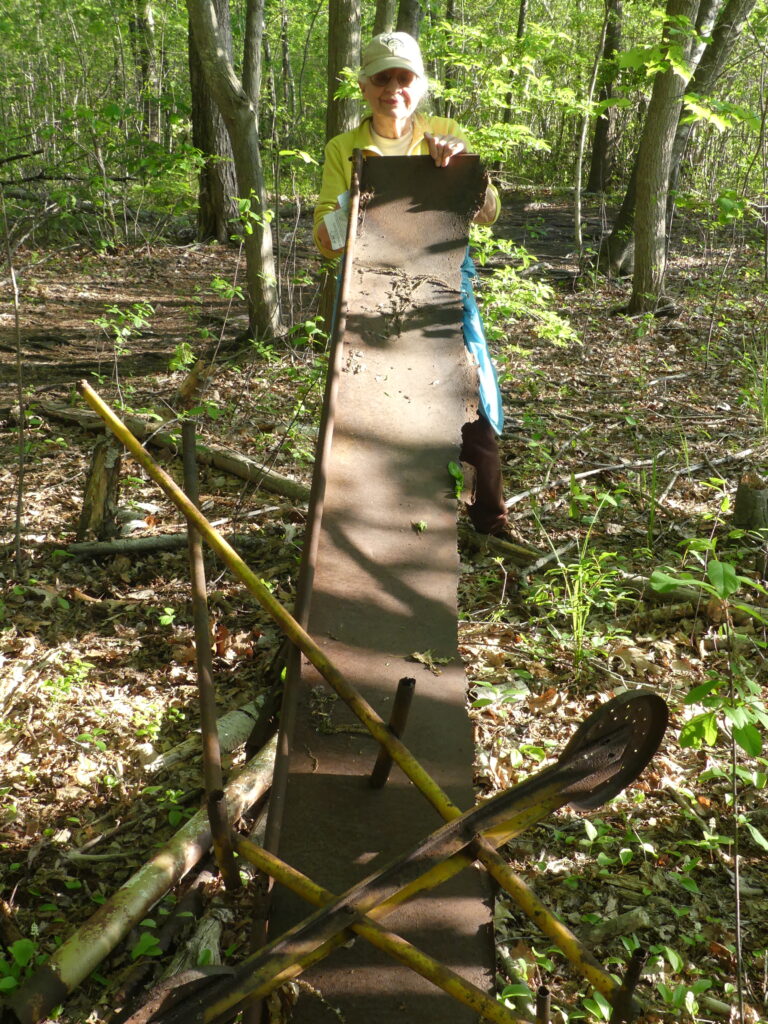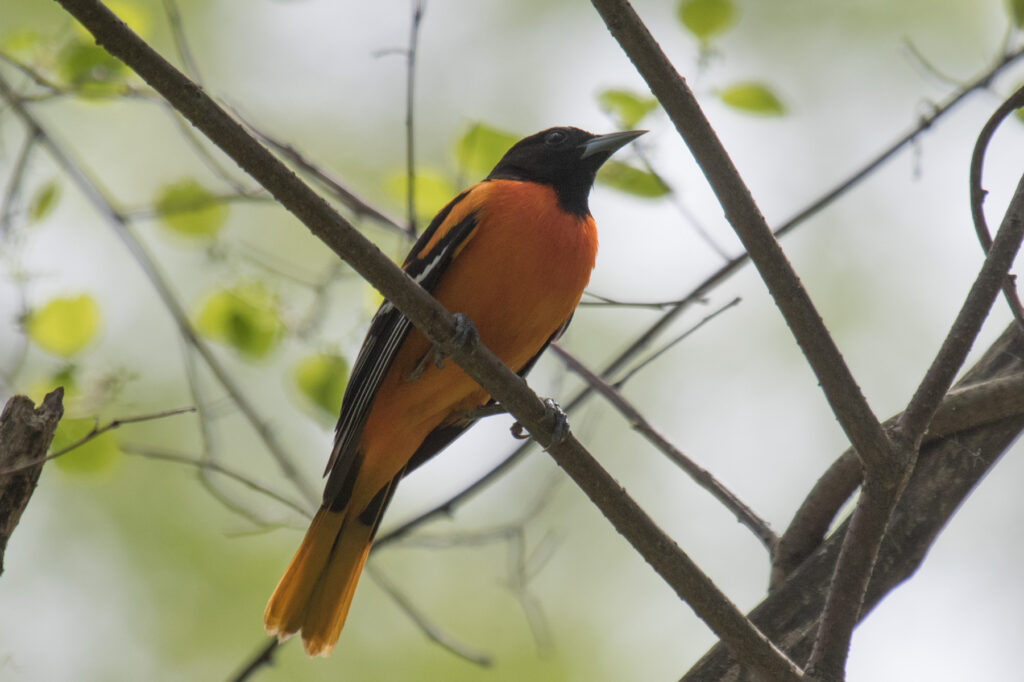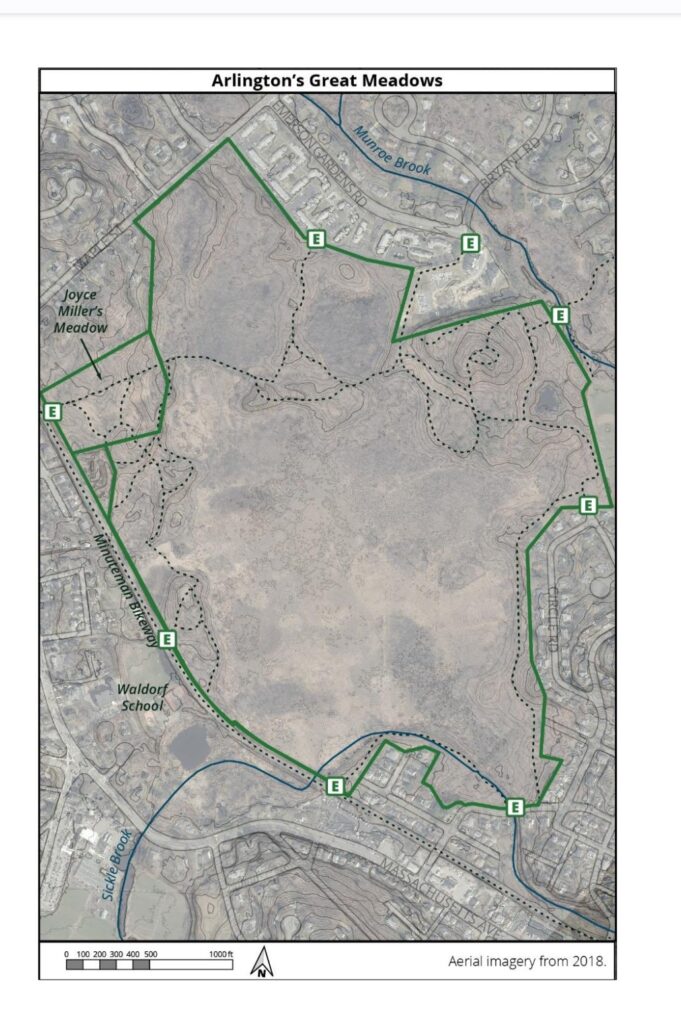Planned events have been cancelled during the COVID-19 Emergency. To keep us all healthy, respect the rules of SOCIAL DISTANCING:
Stay at least 6 feet from others.
Keep dogs away from others as well.
Wear face masks when near others.
For announcements of future events at Arlington’s Great Meadows, please sign up to the Google group through the Contact page. You will then receive news and updates about our events, including weather-related cancellations and reschedulings. This is a very low volume moderated list, and you can unsubscribe at any time.
- Metal trash removed from AGM
Thanks to the initiative and hard, heavy work of Bob Weggel, his wife Diane, and his sister Wilma Frey, large and unsightly pieces of scrap metal– an old slide and teeter-totter– have been removed from Arlington’s Great Meadows (near the Sheila Road trailhead) and taken to a metal recycler.
Many thanks to this industrious team for their efficient efforts, which have improved the experience of AGM for all!

- Birds and Butterflies at AGM – Spring delights
The Friends of Arlington Great Meadows are delighted to have this short report from birder and butterfly seeker Mark Rosenstein about opportunities to enjoy birds and butterflies at AGM, especially in the spring. Many thanks, Mark!
I first visited Arlington Great Meadows when I heard through the Menotomy Bird Club that this was a good place to see the courtship flight of the American Woodcock. It is performed from late winter through spring at dusk each day, above wet meadows next to woods, as found in the southern and northern ends of AGM.

Baltimore Oriole at AGM. Photo copyright: Mark Rosenstein Birds
The variety of habitats at AGM makes it a good place to see both marsh and woodland birds. During spring migration many warblers can be seen in the tree canopy, and three of them (Common Yellowthroat, Yellow Warbler, and Blue-winged Warbler) will stay to nest. Other migrants like flycatchers are common, with Eastern Phoebe, Eastern Wood-Peewee, Great Crested Flycatcher, and Eastern Kingbird all present and usually easy to hear if not see. It’s not hard to see four different woodpeckers at any time of the year: Downy, Hairy, Red-bellied, and Northern Flicker. For the best chance to see these birds, look before mid-May when the tree canopy leafs out.
One hundred forty four species have been reported at AGM, according to eBird. This list also shows the rarities that have been reported from here, like Yellow-breasted Chat, Rusty Blackbird, American Kestrel, Philadelphia Vireo, and others.
Butterflies
Arlington Great Meadows can be a good place to look for butterflies. One species that is uncommon in Massachusetts is Henry’s Elfin, which is small and mostly brown. It flies in the spring, from mid-April to mid-May and can usually be found in AGM near the northeast part of the park. The Massachusetts Butterfly Club often leads a walk here at this time specifically to look for Henry’s Elfin. The open meadow near the Emerson Gardens entrance is also usually good for hairstreaks at mid summer. And of course, widespread species like swallowtails, sulphurs, Monarchs, and many others can be found where wildflowers bloom.
–Mark Rosenstein
- Open Space report released
The Town of Arlington has released its Arlington Open Space and Recreation Plan, 2022-2029. The Plan – the most recent since 2015 – will “guide the protection and enhancement of [Arlington’s] open space and recreational resources.”
Arlington Great Meadows (AGM) is featured in the Plan as the largest open space resource owned by the Town of Arlington. The action plan notes that the Friends of Arlington Great Meadows (FoAGM) have been an active group stewarding the AGM, and commits the town to “support FoAGM’s efforts to remove invasive plants and restore upland meadows and other habitats, to protect and support diverse wildlife and plant species and to provide public access and public events at Arlington’s Great Meadows.”
The Open Space Committee is responsible for the implementation of the Plan.

- FoAGM 2022 Annual Report released
The Steering Committee of the Friends of Arlington Great Meadows has released the 2022 Annual Report, which will be submitted to the Town of Arlington. The report highlights key accomplishments, including resumed mowing of the upland meadow; the reopening of a public entrance with parking; the launch of the new website; and significant maintenance efforts by committed volunteers, especially focused on controlling invasive species.

From the Annual Report: Scouts from Arlington Troop 313 replacing boardwalk treads The Steering Committee would like to thank the many dedicated and hard-working volunteers and supporters who made this progress possible, and especially for their ongoing commitment to Arlington Great Meadows as treasured open space in the Arlington/Lexington area.
- Arlington’s Great Meadows wildlife now on iNaturalist!
There is a new way to explore and contribute to the nature of Arlington’s Great Meadows! Visitors can now learn about plants, insects, and wildlife at AGM through the global crowd-sourced identification site iNaturalist, and can upload their own pictures to share with others.
iNaturalist is a global web-based project that can help you identify the plants and animals around you, connect to a community of enthusiasts and scientists, and contribute to a rich storehouse of data that is being used to understand and protect nature, including treasured local spaces like AGM.
Thanks to the efforts of Andrea Golden, long-time AGM supporter and one of the founders of the Friends of Arlington’s Great Meadows, the iNaturalist site now has a presence for AGM. The site has been populated with pictures that had already been in iNaturalist which matched AGM’s coordinates. So there are now over 1400 observations available. These include trees, plants, insects, and mammals, which you can now explore (<- Click Here).
You can use AGM’s iNaturalist site to learn more about the creatures that inhabit AGM, or to contribute your own pictures and observations and add to the wealth of information about AGM.
To learn from what others have posted, or contribute your own:
- Browse images others have already shared about AGM
- Search for particular species
- Add your own images by creating an account and uploading your own pictures. See the iNaturalist site for guidance on taking photos that lead to the best results.
Andrea, who has established such sites for other open spaces in Massachusetts, says that “these sites add another way for visitors to contribute to their local conservation areas by recording flora and fauna they encounter. The AGM iNaturalist site creates a record of what organisms have been found, when they are most likely to be seen, and if they might be a concern, for example, if invasive plants or animals are present.”
The Friends of AGM are grateful to Andrea for contributing her time and expertise to making a home for AGM on iNaturalist, and we welcome this new way to describe and share and learn about the rich natural world of AGM.
Hope to see you on iNaturalist!
